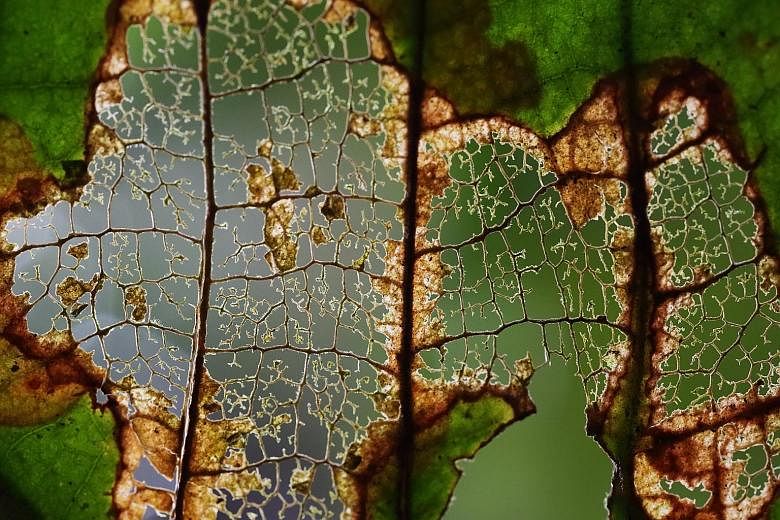A bacterial or fungal infection eats into a leaf in nature's perpetual cycle of birth, death and rebirth in the rainforest of the Bukit Timah Nature Reserve, which reopened to the public on Oct 22 after a two-year revamp.
Shown here highly magnified, the intricate network of veins that deliver water to the leaf cells has been left intact by the microbes. The network contains lignin, a natural polymer that gives wood its strength and resists microbial attack.
In contrast, a caterpillar would bulldoze through everything, leaving gaping holes in the leaf.
Although vein patterns vary widely across species, scientists have found interesting laws governing these patterns. For example, thinner and highly branched veins are more common than thicker veins. This design helps distribute resources evenly across the leaf and makes the network more robust against localised damage or blockage.

